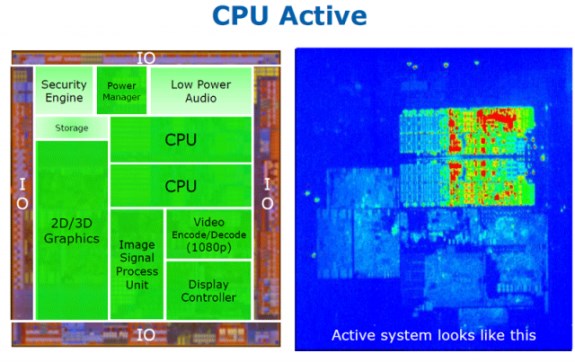
Posted on Friday, September 20 2013 @ 13:50 CEST by Thomas De Maesschalck
ExtremeTech takes a look at several techniques and materials that may be necessary to guarantee the future of performance scaling on PCs, you can read it
over here. One of the first things the site highlights is the need for improved processor cooling. We're not talking about better heatsinks here, but about what's happening below the processor's heatspreader. One of the issues in today's processors is that most of the heat output is focused in a couple of hotspots - a problem that increases when you move to smaller nodes. One potential solution for this would be to find ways to improve lateral heat transer within the CPU itself, the application of new materials or other approaches like computational sprinting.
It’s common knowledge that slapping a better heatsink, water cooler, or phase-change unit on a CPU can yield better overclocking results — but there’s more to the CPU cooling issue than simply bolting on a better heatsink. One of the biggest barriers to higher CPU clock speeds is hot spots. Normally, when we talk about CPU power consumption or temperature, we refer to one overall temperature — typically an average of the core temps as reported by software. Even this, however, fails to capture the scope of the problem. The image below is an Intel-provided infrared picture of Clover Trail’s temperatures in active mode. Keep in mind, the entire SoC is between 80-90 square millimeters. The red dots below are a fraction of that size — pinpricks, really.

